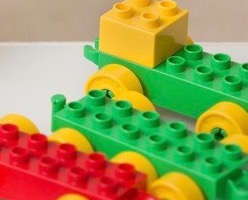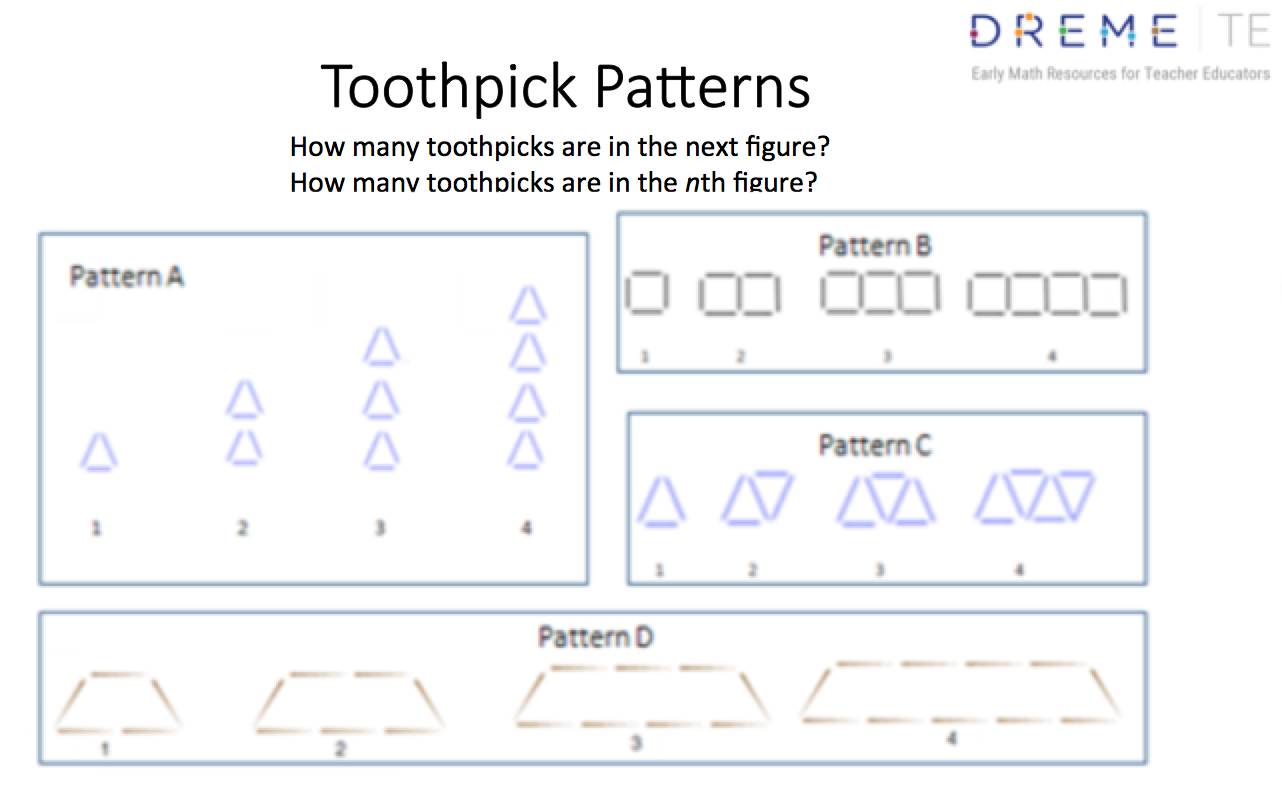One of our main goals throughout all the modules in this website is to help participants understand the importance of assessing children’s thinking. To help you to achieve this goal, we have designed several activities that you can use in a higher education classroom or in a teacher workshop. The activity described here engages participants in an analysis of their own thinking as they solve math problems.
Activity for Teacher Educators
 In this activity, you will present participants with a math problem to solve, but a problem not appropriate for young children. This is a fairly common activity in teacher workshops. The goal is not to illuminate children’s thinking, but to provide participants with the experience of analyzing, describing, and justifying their own thinking. What they learn about themselves will be valuable for understanding children’s thinking. Also, learning that their peers use a variety of solution methods will help them appreciate the variety of methods that children use as well.
In this activity, you will present participants with a math problem to solve, but a problem not appropriate for young children. This is a fairly common activity in teacher workshops. The goal is not to illuminate children’s thinking, but to provide participants with the experience of analyzing, describing, and justifying their own thinking. What they learn about themselves will be valuable for understanding children’s thinking. Also, learning that their peers use a variety of solution methods will help them appreciate the variety of methods that children use as well.
You can begin by saying to participants, “Today you are going to start off by solving some problems mentally, in your head. You will not use paper and pencil to get the answer. Try to be aware of your method for solving the problem and then be prepared to describe what you did to solve the problem and why.” It may be useful to first divide participants into small groups so that they can later discuss and compare solutions with their peers.
You can then present the problem, 238 + 97, written in horizontal form (horizontal, rather than vertical, is important for encouraging a range of different ideas beyond the standard algorithm). Give participants just a few minutes to solve it mentally, and to follow up by writing out a description of what they did in their head.At the outset, the participants may groan and complain about doing a problem like this in their heads. But then they display several different approaches.
An Example of 238 + 97
Here is what a former Kindergarten teacher wrote about how she solved a problem that I presented in an informal setting (not a teacher workshop or higher education classroom):
I added the 8 and 7 and got 15, remembered the 5, added the 9 and 3 and got 12, added the 1, added the 1 to the 2 and got 335. I felt glad I could remember all the numbers!
This response, which in our experience is fairly typical, involves trying to use the standard algorithm in some kind of mental form. Asked whether she imagined and worked from a mental picture of the entire written algorithm, she said that she did not. Instead she looked at the two unit numbers in the problem 238 + 97 written horizontally, added them as she described, and then went on to the two tens numbers, and so forth. Other participants may try to picture and use the entire algorithm mentally, writing down the numbers, carrying the 1, and so on.
I then asked the former teacher to do the problem in a different way, not using anything like the standard method. She did so, and wrote the following:
I added 100 to 238 and got 338. I know 97 is 3 less than 100 so I subtracted 3 from 338 and got 335.
Certainly this “invented” method is easier to do mentally than the one mimicking the standard algorithm. Further, the invented method is based on several important ideas, one of which she expressed as the following:
I know 97 is 3 less than 100 so I subtracted 3 from 338 and got 335.
The idea is a kind of compensation or partitioning in which adding x to b requires taking away x from c. Here is a written representation:
238 + 97 = (238 – 3) + (97 + 3) = 235 + 100 + (3 – 3) = 335
I then asked her to explain the mathematical ideas underlying her solution, and she replied:
I know that the 2 in 238 is really two hundred, so I can add one hundred, which is sort of the same as two plus one except it's really two hundred plus one hundred. The 38 just sits there. I know that the 7 in 97 is seven ones, and that three more ones would bring the ninety seven to one hundred, so because I ignored those three ones when I added the one hundred, I have to take them away again, which is what I did.
This explanation is similar to what I described above. But it also includes the explicit notion of place value: “…the 2 in 238 is really two hundred…” and also the idea of numbers being composed of iterations of one (“I know that the 7 in 97 is seven ones…”).
We see then that a simple problem like 238 + 97 can reveal at least one non-standard explanation (usually there are several) and that the mental solution can draw upon important mathematical ideas. Some participants may fluently describe the non-standard solution and the ideas upon which it is based, but others may not.
Ideas for Engaging Participants
In a classroom or workshop setting (as opposed to the informal setting described above), you can conduct this activity as follows:
- First, have participants solve the problem mentally and write out their solution.
- After this, participants can describe their methods to the group (either the whole class or members of their small group).
- Then, ask participants to discuss their peers’ methods and comment on the mathematical ideas underlying them. One especially important comparison is between the standard algorithm and the invented methods. Sometimes, the standard algorithm is executed in a rote manner, whereas the invented methods are based on interesting mathematical ideas.
Another suggestion is to ask participants at the end of the activity, “Why do you think I gave you this problem to do?” It is likely that they will discuss the importance of multiple solutions based on sensible mathematical ideas, and that they will recognize how hard it can be to describe one’s thinking and the ideas behind it.
A final suggestion is to ask participants about the implications of their problem-solving experience for helping young children to learn math. The hope is that participants will conclude that it is valuable to investigate children’s varied problem solving methods and the ideas behind them, and that they may be as surprised by children’s methods as they were by their peers’ and even their own.



